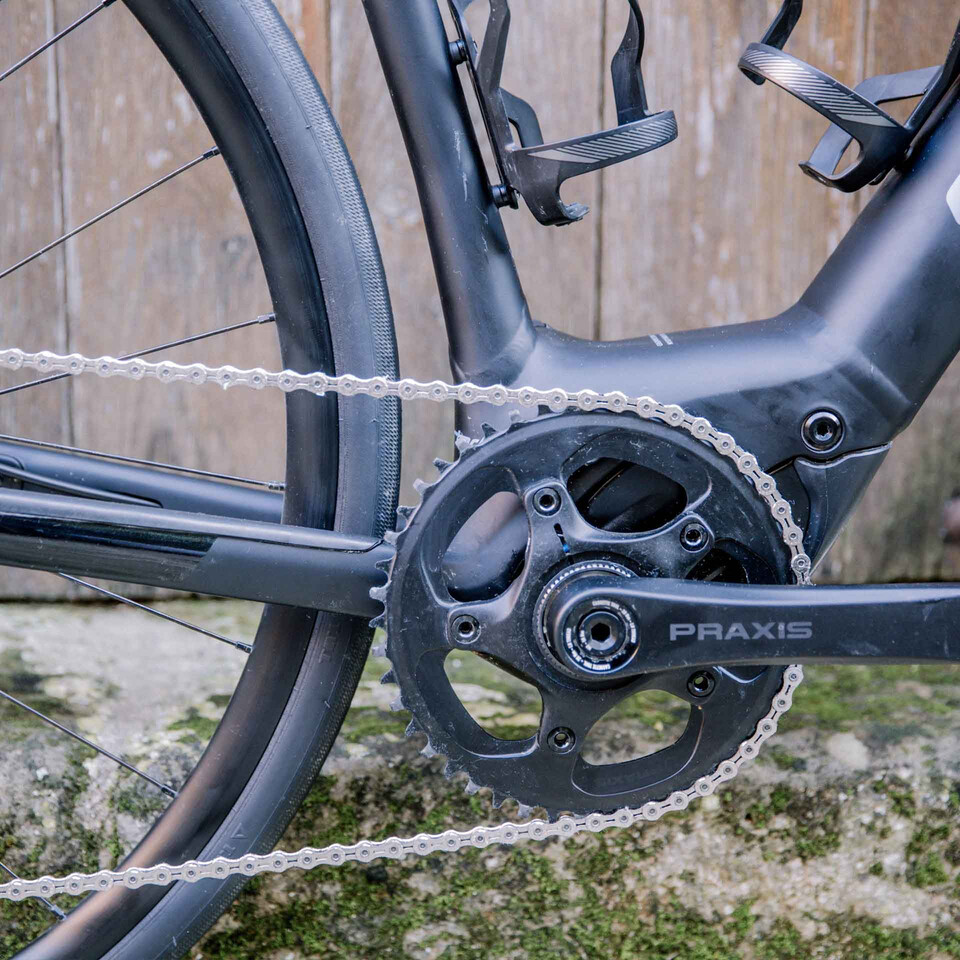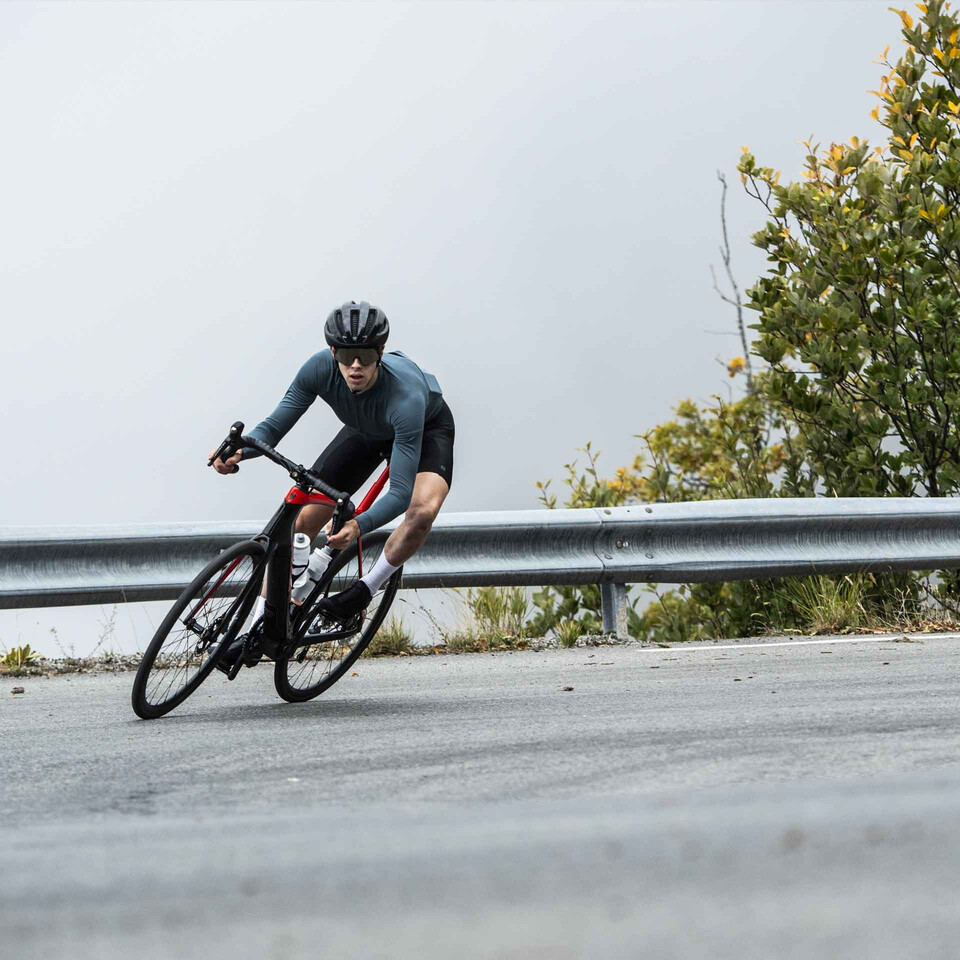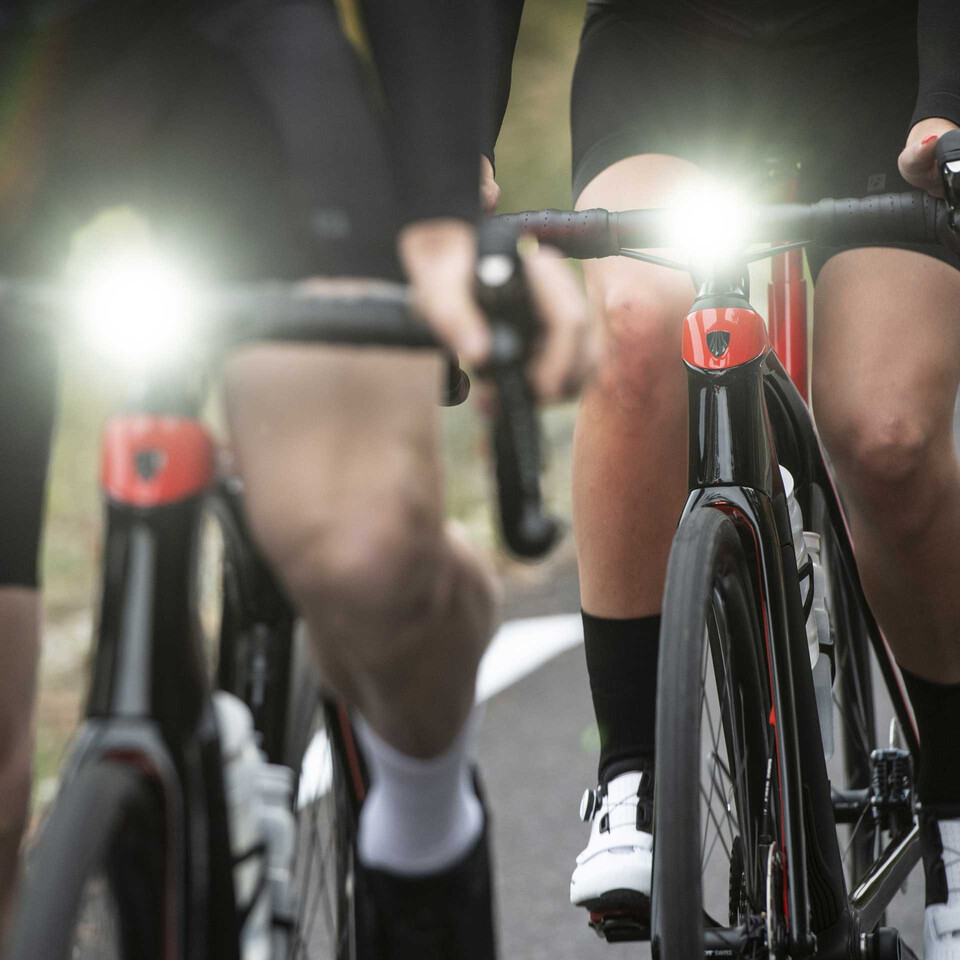
Electric Road and Gravel Bikes
Back to Basics
Riding an electric bike can open up new possibilities for many riders in terms of terrain, distance and elevation, but they may also cause extra worry and anxiety as they involve new technology. Here we aim to allay any of these fears and show that an electric bike is very similar to owning and riding a non-electric bike, just with more power available.
What should I wear to ride my electric bike?
The range of motion needed to pedal an electric bike is identical to that required for a non-electric bike, so similar clothing should be worn. For short commutes and city errands, comfortable, unrestrictive clothes that aren’t too baggy can be used, but for anything more than a few miles the extra comfort of cycling-specific clothing will pay dividends. This means padded short, close-fitting top and protective gloves, along with a windproof jacket, base layer and cycling tight in cooler weather.
These purpose-made cycling garments are not only more comfortable to ride in, but they are also made from technical materials which will wick away any perspiration and moisture as well as drying out more rapidly. This is vital on longer or harder rides as, despite some misconceptions, electric bikes do still require rider power and so it is very easy to work up a sweat even with some electrical assistance.

Can I use my normal clipless shoe/pedal options?
The short answer here is yes. Whatever pedals and shoes combination works for you on a non-electric bike will work equally well on an electric bike. So whether it is double-sided SPDs on a gravel bike, single-sided clip-in pedals on a road bike or flat pedals on a commuter for convenience, you can stick with what you are confident with.
Do I need a different helmet for riding an electric bike?
Whilst it isn’t compulsory to wear a helmet on an electric bike, just as it isn’t on a non-electric bike, it is certainly advisable to do so. Speeds might be higher than average compared to a non-electric bike, particularly in towns and cities where mixing with lots of other road traffic is commonplace. There is no specific electric bike helmet safety standard, so CE standard EN 1078 for cycling helmets still applies, but there are a few other things to think about. If commuting, then a mountain bike or urban style helmet might be more appropriate, with the more extensive coverage providing better protection and the visor helping keep any rain out of your eyes.

MIPS (Multi-directional Impact System) is well worth considering in a helmet, as it provides extra protection against glancing or oblique blows such as may be more likely when riding in amongst traffic. Ventilation might not be so much of an issue for short, local journeys, but it is just as important a consideration as it is when riding a non-electric bike on longer rides, so if you are intending to embark on harder road or gravel rides then make sure that your helmet has good airflow.

Can I use normal chain lube?
Other than the addition of an internal motor, almost all the drivetrain components on an electric bike are identical to those on a non-electric bike, so a standard chain lube will work just fine. However, as electric bikes are capable of generating more torque than most riders can on a non-electric bike, there are electric bike specific lubes available. These have a higher lubricity to cope with the torque and will protect the chain and drivetrain for longer.

Are there any spares I should carry specifically for electric bikes?
As most good electric bikes use standard parts other than the motor, battery and frame, a standard tool kit and spares should suffice. The motor and battery are sealed units that aren’t suitable for roadside repairs.

Can I still ride in a bunch?
In the UK, the law dictates that an electric bike can’t be assisted once it reaches 15.5mph (25kph). This doesn’t mean that the bike can’t do speeds above this level, but that once 15.5mph is reached all assistance will cut off and it will be down to the rider’s legs. Uphill this is unlikely to be a problem and in fact, you may well find yourself having to back off the pedals or turn the assistance level down to stay in the bunch (or have to wait at the top…). Downhill it certainly won’t be an issue, and the typically better brakes and slightly longer wheelbase of electric bikes mean that they descend very well.

On the flat, a group of riders can easily exceed the 15.5mph limit on electrical assistance, so this might be considered an electric bike’s Achilles heel. However, the bike can still be pedalled above this speed using leg power alone and on flat roads the extra weight has far less of an effect than it does uphill so it is less of an issue than might be imagined. Of course, for pan flat rides where the group speed is likely to be above 15.5mph for most of the ride an electric bike is not the ideal choice, but for rolling, hilly or mixed routes they can still be of significant benefit. This is also the kind of scenario that the latest, lightweight electric road bikes are designed for; they have smaller, lighter batteries that help on the hills but won’t hold you back when the assistance limit is reached.

Is it harder to brake when descending?
Whilst electric bikes are heavier than non-electric bikes, they generally have uprated hydraulic disc brakes to cope, using bigger rotors for more power. Also bear in mind that the extra five to eight kilos weight is still only a small percentage increase when considered against the weight of an 80kg rider and gear plus a 10kg bike. In fact, thanks to the slightly longer wheelbase and strong brakes, electric bikes are usually pretty good downhill.

Can I power my lights and GPS computer off my bike's battery?
Some commuting style electric bikes have small lights which are wired into the main battery, but road and gravel bikes don’t usually have this feature so that the rider can choose the right light for their requirements, be that a 2,000 lumens off-road light or a smaller set up for a bit of extra visibility on-road. There are now lights available which can be hard-wired into some existing electric-bikes, but this is usually a job for a bike shop. A few electric bikes have a micro-USB port in the head unit for topping up GPS batteries which may also be compatible with some lights.

What happens if I run out of charge mid-ride?
Running out of charge on an electric bike is not like running out of petrol in your car; the bike will still function perfectly well as a standard bicycle, albeit a bit heavier. Obviously, the additional power boost from the motor won’t be available, but the bike will still be completely rideable, with the gears and brakes working as normal. Some of the better electric bikes decouple the motor entirely from the drivetrain when not in use, so there isn’t even any extra drag in the system.
The similarities between an electric bike and a non-electric bike are far greater than the differences, both in terms of riding and maintenance. As the worst that can happen is running out of charge and having to pedal home on muscle power alone, so there is nothing to fear and much to gain for many riders from an electric bike.








